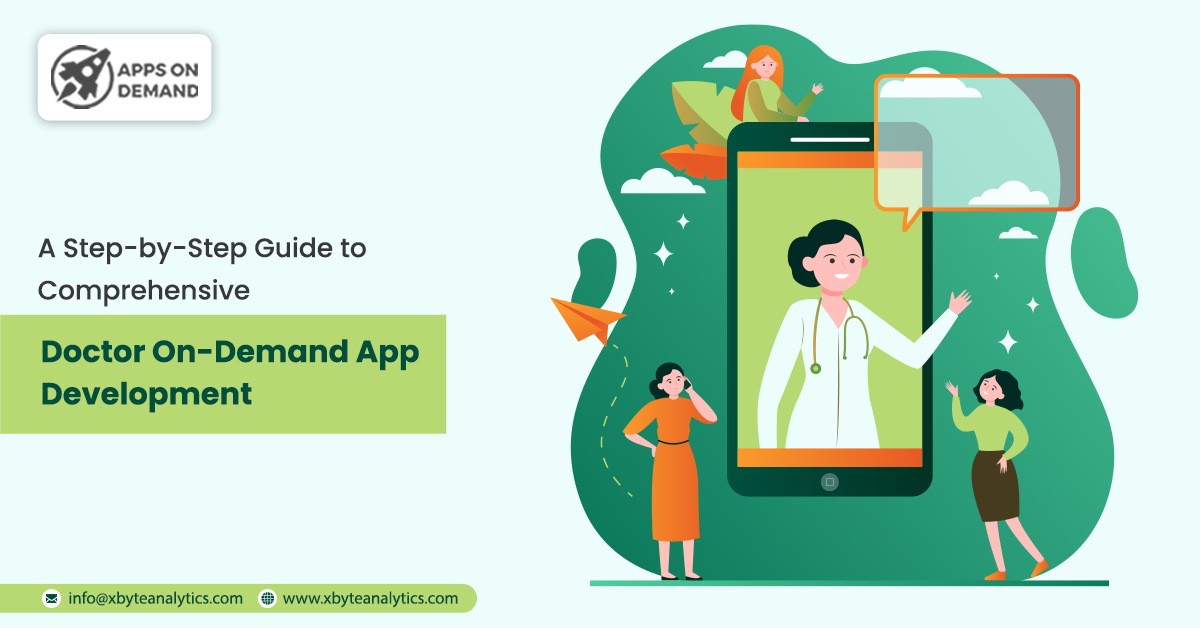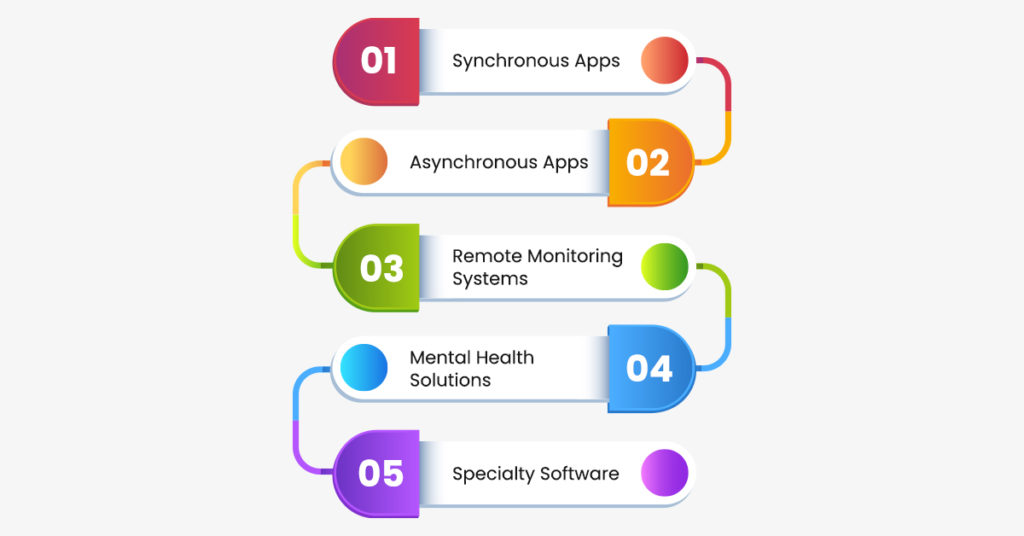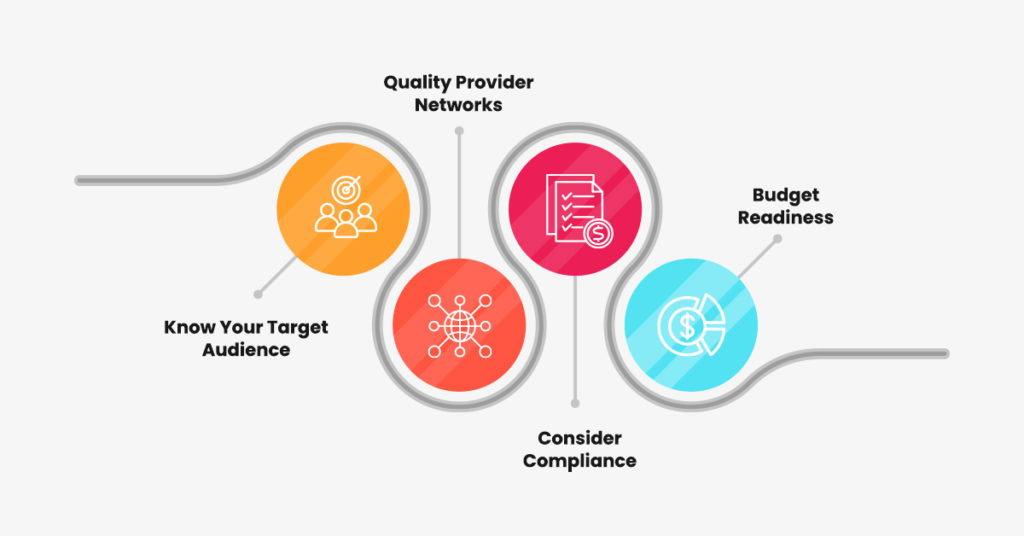Step-by-Step Guide to Develop a Doctor On-Demand App

Quick Summary :
Explore the development process of Doctor On-Demand Applications and how these apps transformed and emerged to improve healthcare operations and accessibility. In addition to outlining the unique app features, the development process, benefits, and challenges, this guide also emphasizes the effects of technology on patient care and how telehealth solutions such as virtual consultations have changed the medical landscape.Thinking about why and how to get started with state-of-the-art Doctor On Demand app development for your evolving healthcare service? This healthcare software solution is constantly accelerating the growth in the healthcare, doctor consultation, and telemedicine industry. Doctor-on-demand apps have revolutionized healthcare in exceptional ways. These applications use technology to improve access and efficiency, which is transforming traditional care models into new-age improved patient care models.
Patients can now receive medical help by clicking a few options on their apps, and get medical access immediately even at remote locations. Virtual consultations are now easier and faster. Patients can reach recognized healthcare providers by browsing the apps and finding top providers after analyzing reviews etc.
These digital solutions also help improve patient outcomes, ensuring the right interventions at the right time. This makes healthcare more patient-focused and accessible, inducing an innovative shift in the doctor-patient consulting framework.
Understanding the Need for On-Demand Doctor App Development
- As per Statista, the Doctor-on-Demand app market is significantly booming and the global mHealth market is expected to reach $332.7 billion by 2025.
- The global telemedicine sector was worth $60.8 billion in 2022, which is projected to grow at a CAGR of 17.16%, reaching $225 billion by 2030.
- McKinsey highlights that with these platforms, there is continued growth potential to $350-$410 billion in the market annual value by 2025, and so is the potential for improving patient care.
How Does a Doctor-On-Demand App Work?
Doctors-on-demand apps work by connecting patients to healthcare service providers (doctors, physicians, specialists, etc.). Patients have to download and get registered on these apps. Patients only need to input some basic information regarding their medical history, symptoms experienced in their bodies along preferences.
After registration is complete, patients can search for their required doctors and read reviews, availability, fees, timing, etc. to select the best one for them. Once the patient selects the doctor, the patient can pay online to fix the appointment (which can be either virtual or physical). The app facilitates secure online payments through multiple payment gateways.
Patients can ask for advice online as a way of beginning consultation so that medical practitioners have an insight into the medical issue. Later for specialized treatment, the patient can visit the clinic if required.
Doctors offer personalized treatment options such as medicine prescriptions after discussions. The app stores the medical records as well as prescriptions related to the patient’s medication safely, and easily accessible by both patients’ doctors when required.
Types of On-Demand Doctor Apps

The Doctor On Demand apps are categorized according to their modes of service delivery. The general yet latest ones are mentioned below:
Synchronous Apps
Such applications enable real-time video consultations hence prompt access to healthcare providers.
- Pros: Instant medical advice for emergencies.
- Cons: Tight scheduling between patients and providers may be necessary.
Asynchronous Apps
Patients can send medical queries at any time convenient for them and wait for responses from doctors later.
- Pros: Convenient for patients who do not have to align schedules.
- Cons: Different response times, therefore there may be delays in care.
Remote Monitoring Systems
They connect with wearable gadgets that observe some health dynamics such as heart rate or glucose levels over a continuous period through wearables.
- Pros: Timely intervention is possible as medical surveillance is continuous.
- Cons: Device compatibility issues and privacy concerns are raised among users.
Mental Health Solutions
Applications are specifically designed to help people with mental health problems by giving them an opportunity through videos to talk with therapists.
- Pros: Easier access to mental health services provided in familiar settings
- Cons: Some persons prefer face-to-face interventions.
Specialty Software
These targeted apps serve particular areas of the healthcare industry by connecting patients with specialized practitioners.
- Pros- Direct access to experts on certain conditions
- Cons– Not general enough compared to other healthcare needs.
Challenges in Development
- User Experience: Failing to provide a seamless user interface can result in dissatisfaction and high churn rates.
- Data Security: The issue of data security is so important because health-related data is sensitive. Cyber attackers typically focus on the health care sector and a single breach may affect several million individuals.
- Compatibility with Devices: Android development challenges like multiple devices and version compatibility can be a bit overwhelming.
- Third-party Integrations: Any integrations for payment, medical records, or video consultations with third-party apps is a challenge in itself.
- Regulatory Compliance: Navigating through the complexity of healthcare regulations (HIPAA, FDA, EPSC, or HHS) can be daunting, necessitating careful attention.
Contact us today to develop a custom on-demand app.
Key Features of Doctor On-Demand Apps
The listed core features combine to enhance user experience at all user roles, streamline communication, and promote effective healthcare delivery via Doctor On-Demand Apps.
The features are divided into Admin, Doctor, and Patient Modules. Each one will see features related to them in these apps.
|
Admin |
Patient |
Doctor |
|
● Admin Dashboard ● Patient Management ● Doctor Management ● Report Management ● User Management ● Analytics ● Compliance Monitoring |
● Patient Profile ● Search Doctors & their Profiles ● Book Appointment (virtual/physical) ● EMR ● Secure Video Calling ● Online Appointment Scheduling ● In-App Messaging ● Integrated Payment System ● Electronic Prescription Functionality ● Health Records Management |
● Easy Registration ● Patient Management Tools ●Appointment Scheduling and Availability Management ● Secure Communication ● Patient Diagnosis Templates ● Prescription Management ● Video Consultation Features ● Health Records Access ● E-prescriptions ● Earning tracking |
Other Advanced features:
In-App Camera Integration
In-App Call & Chat
In-App Navigation & Real-Time Tracking
Cost Calculator
Push Notifications
The app sends pop-up notifications to keep patients informed about appointment reminders, messages from doctors, or health tips, thus ensuring timely communication.
Real-Time Analytics
Document Sharing
Want a HIPPA-Compliant On-demand Doctor’s App? Get it custom-built!
How to Develop a Doctor On-Demand App: A Step-by-Step Process
It involves the mentioned steps to yield an excellent result.
1. Requirement Analysis
2. Market research
3. Technology Stack
4. Prototyping and Wireframes
5. User Interface Design
6. Backend Development
7. Integration of Key Features
8. Compliance with Healthcare Regulations
9. Telehealth Features Development
10. Secure Data Storage
11. Integrate Payment System
12. Testing and Improvement Processes
Top Doctor-on-Demand Apps in the Market
Highly recognized and industry-leading doctor-on-demand apps are Practo, HelloMD, Teladoc, Lybrate, etc. Their common features include the safety of video consultation, appointment scheduling, and ePrescriptions. They stand out because:
● They provide various services in different specializations and allow user access through video conferencing with medication management.
● Further, they target appointment booking and secure communication to retain a large number of users.
● These apps offer urgent care and integrated health records for efficient patient management.
Practo
HelloMD
Teladoc
Lybrate
Want to develop apps like Practo, HelloMD, or TelaDoc? You are just a step away!
Benefits of Developing a Doctor-on-Demand App
The main perks include:
For Patients
- Convenience: Patients can save time as they access healthcare services when needed without having to go to health centers.
- Improved Access to Care: Round-the-clock availability ensures that patients get timely treatment thus preventing complications from untreated conditions.
- Saved Costs: In-person visits can be eliminated by these applications leading to reduced financial expenses incurred by patients.
- Increased Privacy: It allows them discuss sensitive issues without any hesitations during consultations.
For Doctors
- Efficiency for Healthcare Providers: This will make it easier for healthcare providers as administrative tasks will be carried out by apps thereby giving more attention to patients with lower hospital readmission rates.
- Better Diagnosis: Features like integrated EHR improve diagnoses by providing physicians with a complete view of a patient’s medical history and symptoms through reports.
- Time-Saving: Doctor on-demand apps have features like automated appointment scheduling, rescheduling, easy cancellations, video conferencing, etc. These features are designed to save doctors precious time. Many of the tasks can be handled by doctor’s associates or assistants.
- Higher Income: Doctors get more patients with these apps. With better marketing strategies and great reviews/ratings from patients, doctors have improved their chances of getting more patients.
For Businesses who own these apps:
Startups, healthcare technology businesses, etc. who get these apps developed are the biggest beneficiaries of the on-demand doctor app. Revenue in the Online Doctor Consultations market is projected to reach US $ 11.5 billion by 2029. It is currently around 4-5 billion dollars. This is a market with great earning potential.
Those who develop these apps earn commissions on every patient-doctor appointment booking or can also charge a per month or annual subscription fee from doctors to get them listed on the app. In-app ads for healthcare products are another source of income.
Costs Involved in Developing a Doctor On-Demand App
The cost to develop a demand doctor app depends on a number of application development elements. However, the exact costs can vary based on requirements and complexity. Have a look at the elements:
- Creating an on-demand doctor app costs US dollars $30,000 to $50,000. Nevertheless, the cost can exceed $100000 or more, depending on factors such as scale, features, platform intricacy, and data requirements.
- Choice of Technology – The selected tech stack also affects the overall costs and length of time for mobile app development.
- Ongoing Maintenance – To ensure that an app is sustainable, there have to be regular updates and maintenance as well.
Factors to Consider While Investing In Custom Telemedicine App Development

Healthcare service providers who want to invest in an on-demand doctor app need to know the below before putting in their money.
Key considerations before investing in doctor on-demand app development solutions include:
- Know Your Target Audience: Identifying demographics and preferences among potential users of a new product.
- Quality Provider Networks: Check Medical networks in the app and the quality of doctors listed in the app.
- Consider Compliance: Understanding laws regarding things like GDPR and HIPAA helps one make sure that their application meets legal requirements.
- Budget Readiness: Setting up a clear budget coupled with understanding various costs may guide your development and marketing strategies toward making this application more successful after investing.
Your Blueprint for the Future of Virtual Patient Care
On-demand apps in health care are nascent, inducing a drastic change in how the patient accesses medical services. These apps give unparalleled convenience, where a user can have consultations with medical professionals anytime, anywhere.
On-demand telemedicine apps not only revolutionize the limited access to healthcare but also promise better health outcomes. In the end, the integration of technology in healthcare delivery through on-demand apps is going to redefine patient experiences and reshape the whole sphere of healthcare.
If you want to develop and launch your on-demand doctor app such as the On-Demand Doctor Aggregator App, Specialists Doctors on Demand App, or a telemedicine App, consult our development experts for guidance and cost estimations. At Apps on Demand, we have an expertise and development team that has experience in developing high-performance apps for the healthcare industry.

